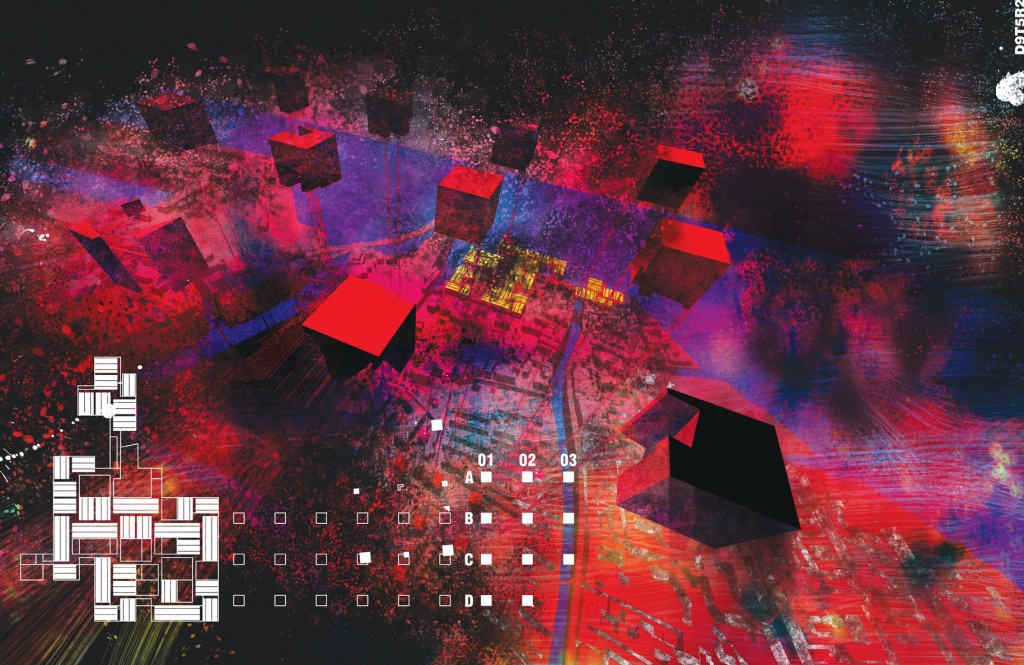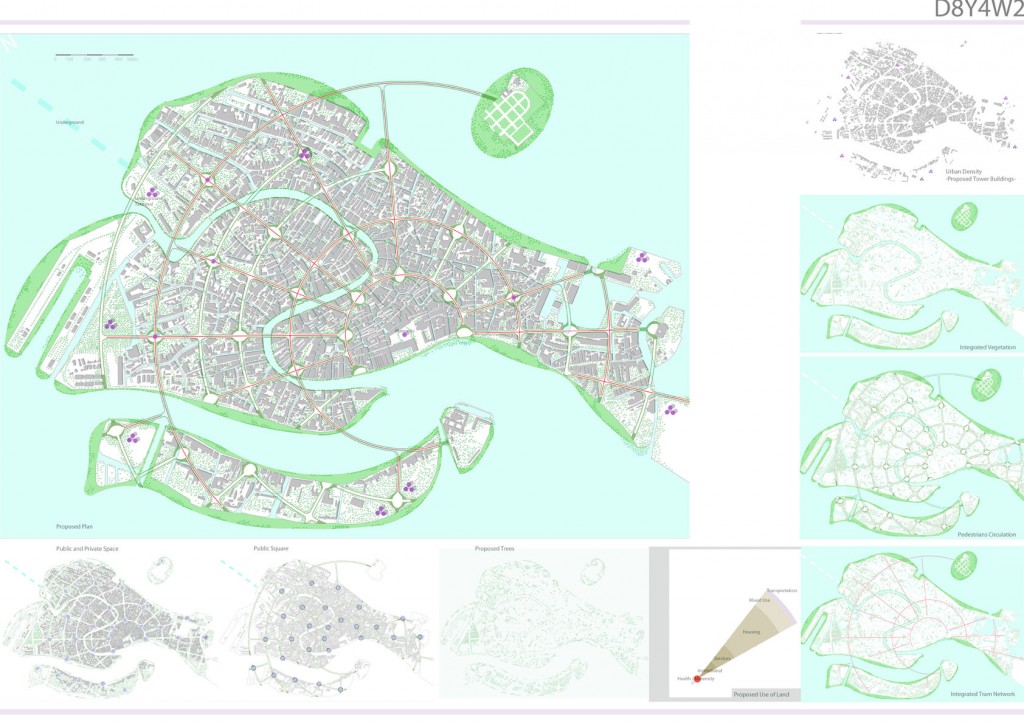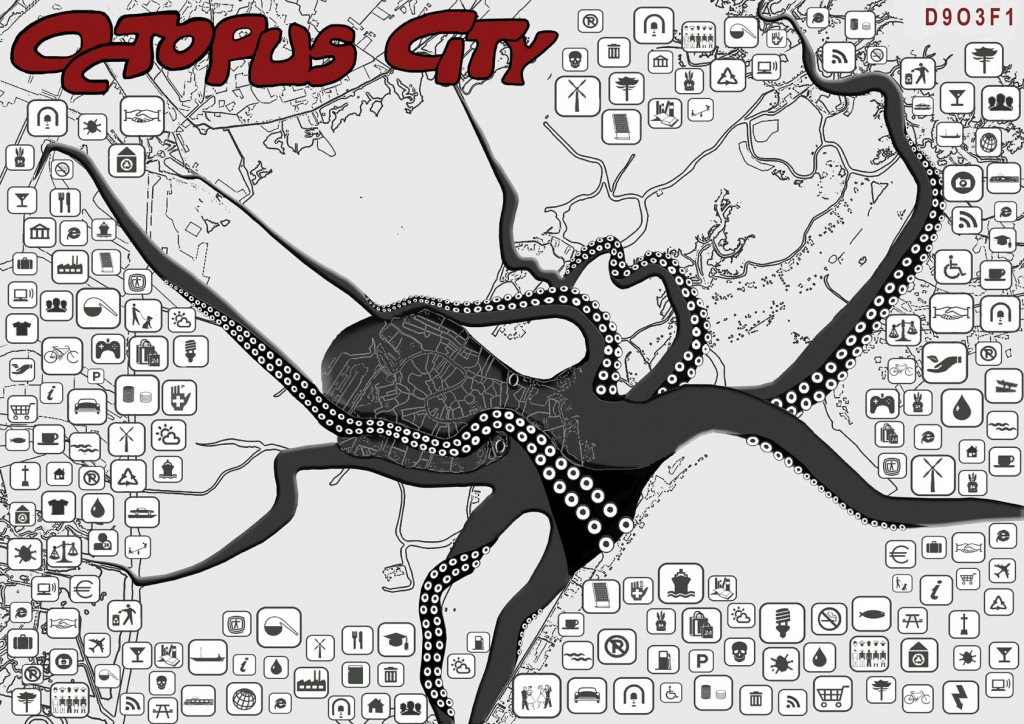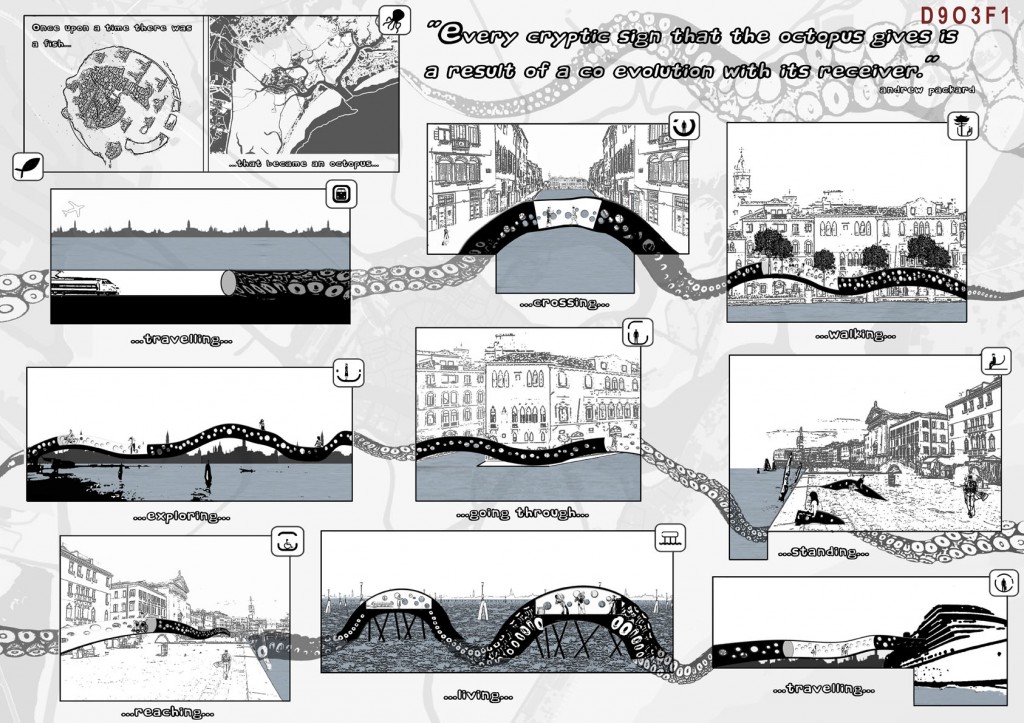Info:
Title: OCTOPUS CITY - Code: D9O3F1Contest: Venice / 2011
By: C. Aldereghi / S. Cennamo / F. Gambaro / T. Cortese
Views: 3695 Likes: 3
Votes:
BJARKE INGELS10 NERI OXMAN7 ELENA MANFERDINI5 MARIA LUDOVICA TRAMONTIN3 BOSTJAN VUGA15.2
OCTOPUS CITY
IS VENICE A FISH? NO, IT’S AN OCTOPUS CITY! In people’s imagination, Venice has always taken the shape of a fish, but instead it is a polycentric and multi-formed city that expands towards the sea: during the Serene Republic it was called a “sea state”, thus as a reminder of its unlimited borders. Recently, its urban identity has been flattened by concepts of bipolarity or that of being a metropolitan city, but Venice is so much more. Its history has always portrayed it in different ways. Our City Vision of Venice is that of an octopus: Venice is not a fish but an octopus city!
The presence of canals in the lagoon; water, land, and air transport systems as well as the internet, make it a city that is dynamic and open to the greatest experiences and urban utopias.
The tentacles of the octopus, in this project, represent some of the possible theories of internal and external, local and international links on both a small and large scale:
- current forms of transport (ships, waterbuses, trains, cars, lorries and airplanes) and then those of the future (light railway, under the lagoon transport…)
- current dwellings (palaces, fondaci, urban islands) and then the future ones (lagoon residences, boathouses that can be docked or made stationary by the use of pilings…)
- present urban spaces (campi, squares, salizade, calli, fondamente) and then the future ones (elements and spaces above the water surface…)
- present day bridges (Rialto, Calatrava, Accademia) and then those of the future (commercial and passenger tunnels above and below the water surface).
The urban identity of Venice, between what is real (everyday life) and what is fiction (the tales of Corto Maltese by Hugo Pratt) then seen from a bird’s eye view (among the most important views are those by De’ Barbari and del Coronelli) and aerial photographs (Venezia forma urbis), is a combined evolution of the city and all the largest welcoming structures, that change the city – apparently unchanged for centuries but actually in continuous transformation dependent on what is around it; just like an octopus with its incredible sense of perception, according to Professor Andrew Packard.
It is through the acknowledgement of this combined evolution that the proposal for the Octopus city was made. Some of Venice’s potential is presented in the two project plates, that are a type of summary of the views of Coronelli and the tales of Corto.
This is a vision of the city, in which the icons represent the numerous opportunities offered by the Octopus city, and the story that is narrated in the few captions, represents, in its turn, some of the human activities that take place there, remembering however that the idea of travelling, an image of aspiration and of desire for knowledge never satisfied, is the greatest attraction in Venice.
Info:
Title: OCTOPUS CITY
Time: 7 giugno 2011
Category: Venice
Views: 3695 Likes: 3
Tags: Accademia , Adriatic Sea , Corto Maltese , Hugo Pratt , Octopus , Piazza San Marco , Scripps Institution of Oceanography , Venice








